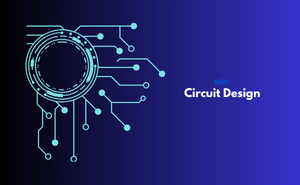👇 CELEBRATE CLOUD COMPUTING DAY 👇
00
HOURS
00
MINUTES
00
SECONDS

Circuit design is the process of creating schematic diagrams and layouts for electronic circuits, which are the building blocks of electronic devices and systems. It involves selecting and connecting electronic components such as resistors, capacitors, transistors, and integrated circuits in a way that achieves the desired functionality and performance. Circuit designers use principles of electrical engineering and physics to design circuits that meet specific requirements for voltage, current, frequency, and signal processing, considering factors such as power consumption, noise, and electromagnetic interference.
Why is Circuit Design important?
Who should take the Circuit Design Exam?
Circuit Design Certification Course Outline
I. Introduction to Circuit Design
II. Analog Circuit Design
III. Digital Circuit Design
IV. RF Circuit Design
V. Power Electronics
VI. PCB Layout and Design
VII. Simulation and Analysis Techniques
VIII. Advanced Topics in Circuit Design
Credentials that reinforce your career growth and employability.
Start learning immediately with digital materials, no delays.
Practice until you're fully confident, at no additional charge.
Study anytime, anywhere, on laptop, tablet, or smartphone.
Courses and practice exams developed by qualified professionals.
Support available round the clock whenever you need help.
Easy-to-follow content with practice exams and assessments.
Join a global community of professionals advancing their skills.
(Based on 258 reviews)
Yes. It includes troubleshooting questions that help you identify and fix common circuit problems in theory and practice.
You should be familiar with basic simulation software such as LTspice, Multisim, or similar tools used for virtual circuit testing.
Yes. The exam includes both analog and digital topics, so you will get a balanced understanding of all major areas.
Yes. It prepares you for common technical questions related to circuit behavior, design choices, and problem-solving.
Yes. It helps students practice core concepts that are often tested in electrical and electronics courses or labs.
The exam includes circuit basics, passive and active components, analog and digital systems, simulation, and troubleshooting techniques.
The Circuit Design Practice Exam tests your understanding of how to design, analyze, and troubleshoot electronic circuits. It covers topics like analog and digital design, components, simulation, and schematics.
No. Basic knowledge of electronics, such as Ohm’s Law and simple circuit rules, is enough to get started.
This exam is for engineering students, electronics hobbyists, technicians, and professionals working with hardware or embedded systems.
Yes. This exam is helpful for assessing student understanding and for guiding lab-based or project-based learning in electronics.